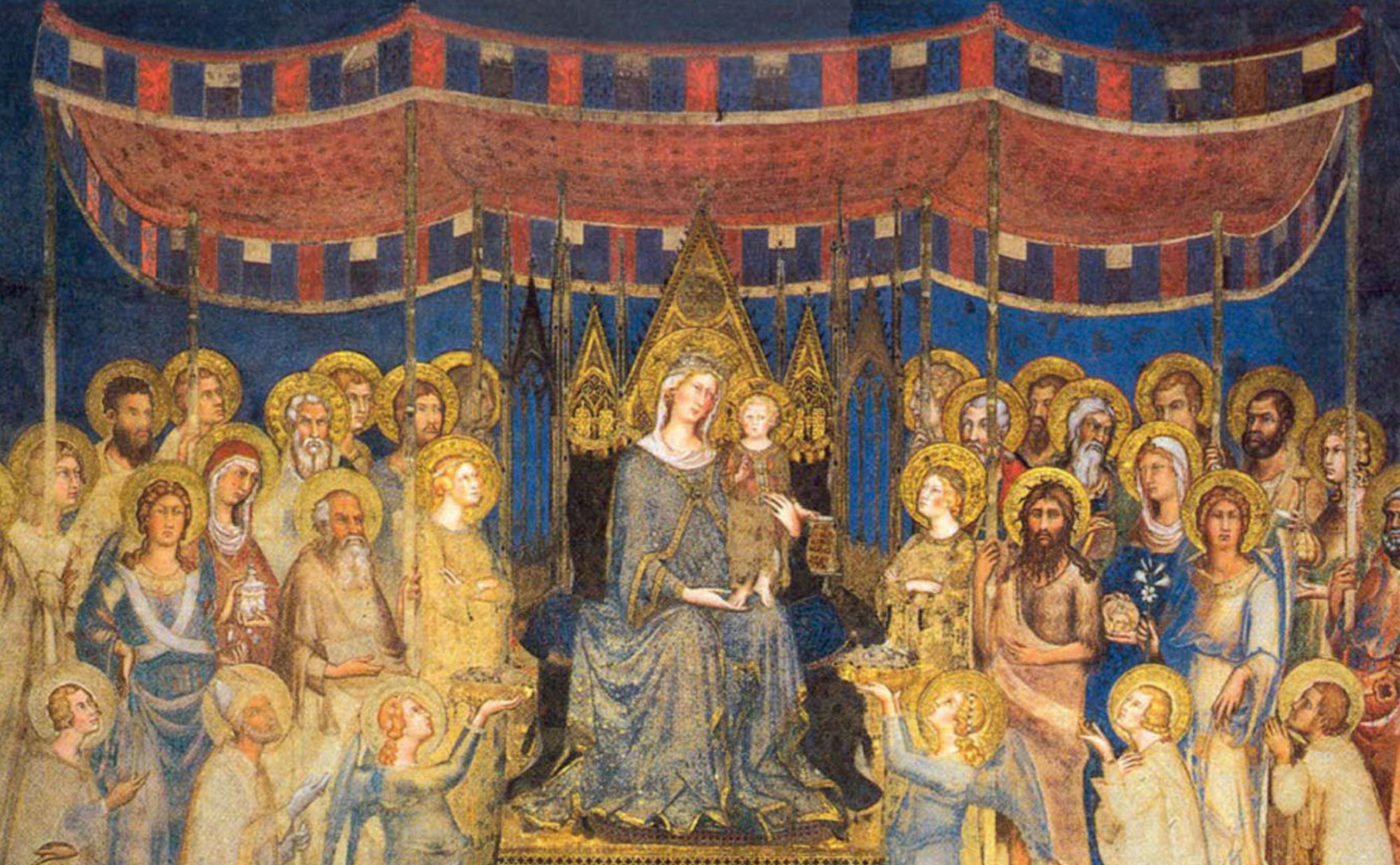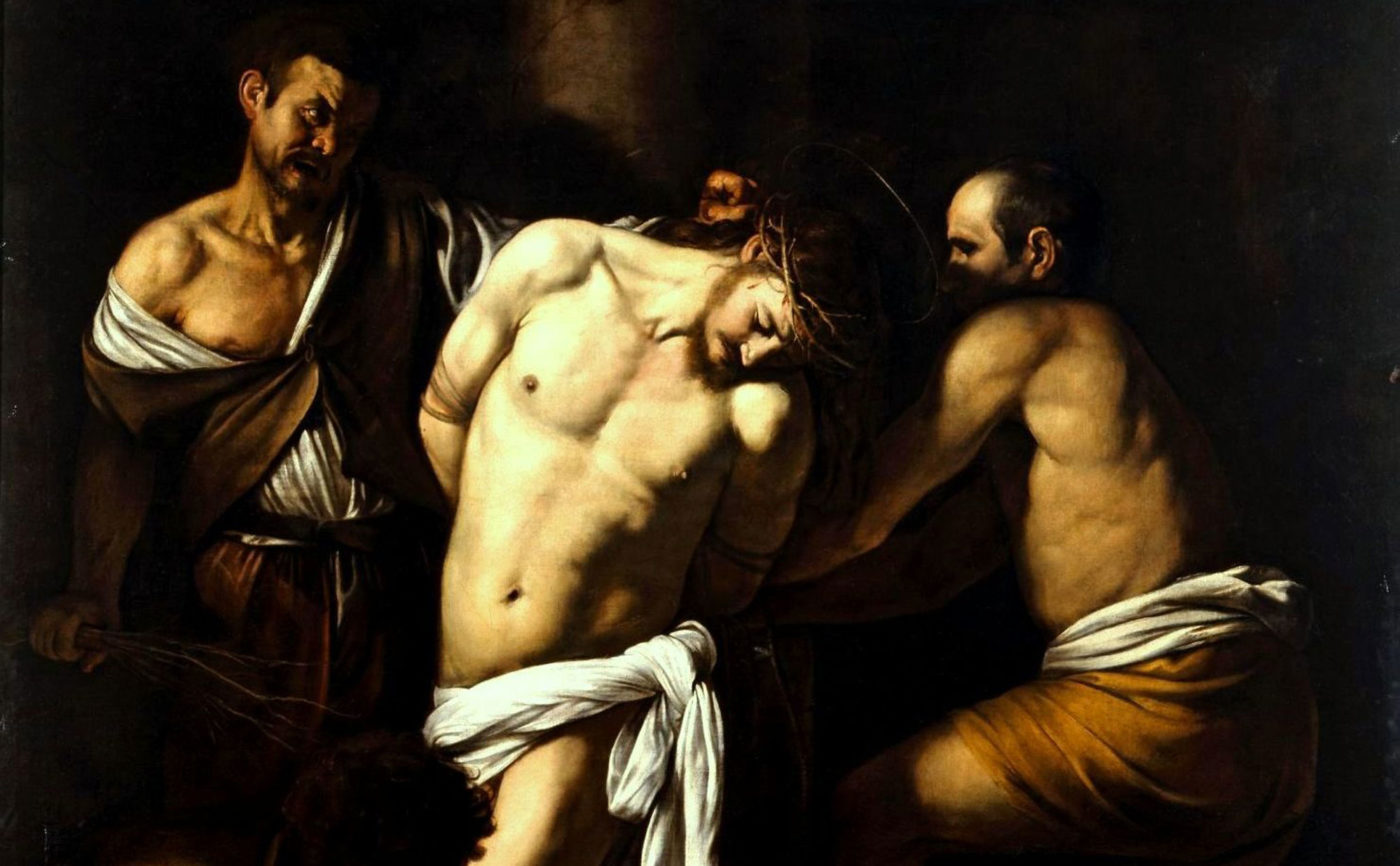Simone Martini, Maestà (detail), 1312-15 To give an example of the rhythmic use of colour, we will talk about the famous Maestà (1) by Simone Martini painted in 1312-15. (1) The work has a horizontal course. In the lower part there is the throne on which sits the Madonna and Child and on whose sides are gathered the saints, above them, in the upper part, stands out on the blue background the colored canopy that serves as a cover. […]
Simone Martini, Maestà (particolare), 1312-15 Per portare un esempio di uso ritmico del colore parleremo della notissima Maestà (1) di Simone Martini dipinta nel 1312-15. (1) L’opera ha un andamento orizzontale. Nella parte inferiore vi compare il trono sul quale siede la Madonna con il bambino e ai cui lati si raccolgono i santi, sopra di essi, nella parte superiore, si staglia sul fondo blu il baldacchino colorato che funge da copertura. Se ora proviamo a eliminare la parte […]
Caravaggio, Flagellation of Christ, detail, 1607 Light can suggest the volumetric spatiality of subjects, animated or inanimate, and a lasting or temporary temporality of events. Throughout the history of art, geographical productions have been marked by different types of representation that, from time to time, underwent declinations according to the ages. We would like to compare three of these different typologies in order to differentiate the three different ways of understanding representation, space and time. If we examine a […]
This intervention was triggered by the reading of Jean Giraud – Moebius Histoire de mon double, passed to me by Marco Bianchini, a talented Italian cartoonist on the breach for many years now. Some passages of the text have struck me particularly and I would like to give them an answer. In particular, Moebius insists on some linguistic aspects that are particularly important to him in the chapter Questions of style. In the text, the great French cartoonist tends to […]
Caravaggio, Flagellazione di Cristo, particolare, 1607 La luce può suggerirci la spazialità volumetrica dei soggetti, animati o inanimati, e una durevole o momentanea temporalità degli eventi. Nel corso della storia dell’arte le produzioni geografiche sono state contrassegnate da differenti tipologie di rappresentazione che, di volta in volta, subirono declinazioni secondo le epoche. Vorremmo quindi, anzitutto, mettere a confronto tre di queste differenti tipologie per differenziarne gli altrettanti modi d’intendere rappresentazione, spazio e tempo. Se prendiamo in esame una tipica […]




